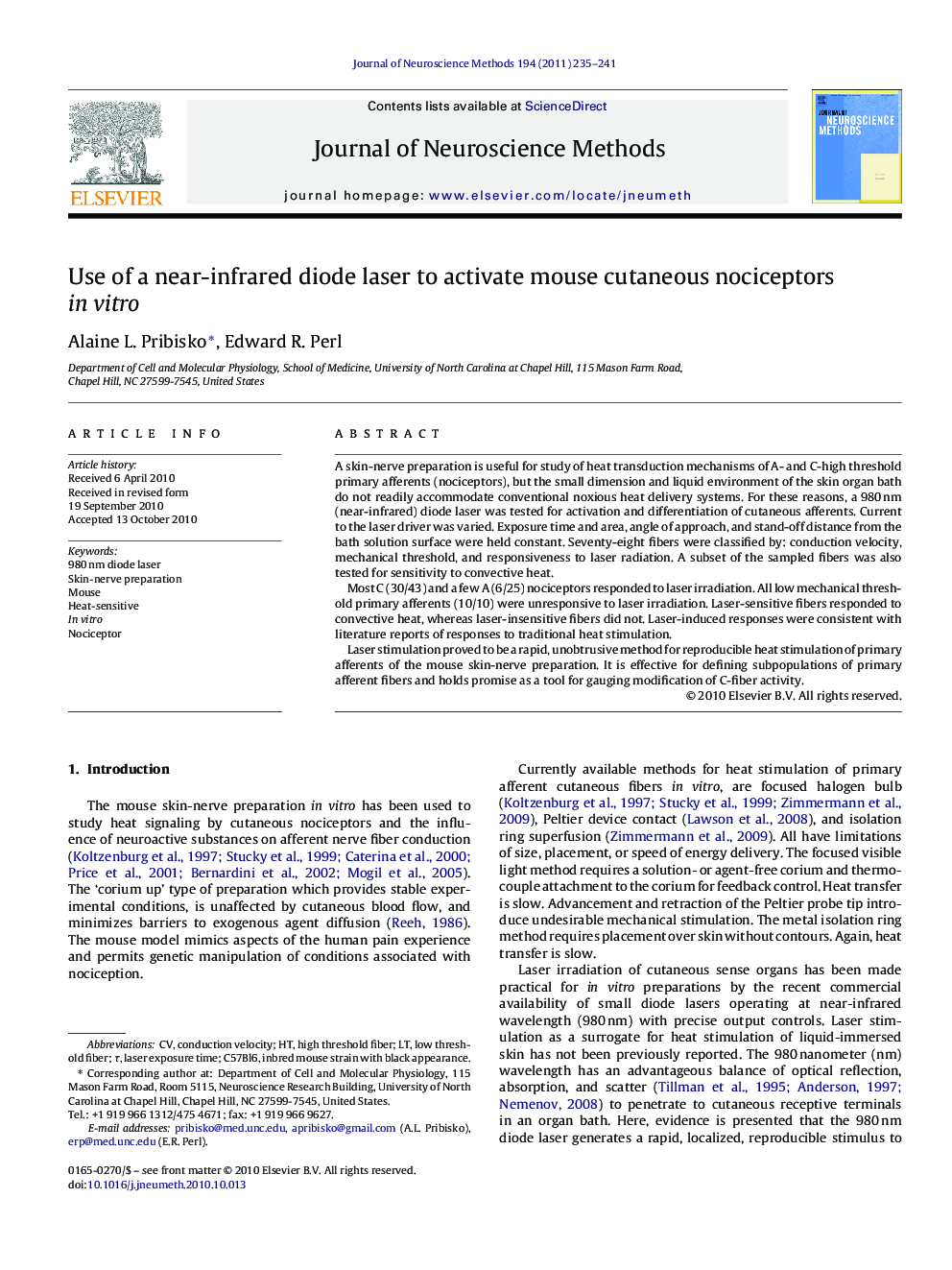| کد مقاله | کد نشریه | سال انتشار | مقاله انگلیسی | نسخه تمام متن |
|---|---|---|---|---|
| 6269855 | 1295162 | 2011 | 7 صفحه PDF | دانلود رایگان |

A skin-nerve preparation is useful for study of heat transduction mechanisms of A- and C-high threshold primary afferents (nociceptors), but the small dimension and liquid environment of the skin organ bath do not readily accommodate conventional noxious heat delivery systems. For these reasons, a 980Â nm (near-infrared) diode laser was tested for activation and differentiation of cutaneous afferents. Current to the laser driver was varied. Exposure time and area, angle of approach, and stand-off distance from the bath solution surface were held constant. Seventy-eight fibers were classified by: conduction velocity, mechanical threshold, and responsiveness to laser radiation. A subset of the sampled fibers was also tested for sensitivity to convective heat.Most C (30/43) and a few A (6/25) nociceptors responded to laser irradiation. All low mechanical threshold primary afferents (10/10) were unresponsive to laser irradiation. Laser-sensitive fibers responded to convective heat, whereas laser-insensitive fibers did not. Laser-induced responses were consistent with literature reports of responses to traditional heat stimulation.Laser stimulation proved to be a rapid, unobtrusive method for reproducible heat stimulation of primary afferents of the mouse skin-nerve preparation. It is effective for defining subpopulations of primary afferent fibers and holds promise as a tool for gauging modification of C-fiber activity.
Research highlightsⶠIn vitro mouse heat-sensitive C and A nociceptors respond to laser radiation delivered by a 980 nm diode laser. ⶠHeat-insensitive nociceptors do not respond to laser irradiation. ⶠLaser-sensitive nociceptors have slower conduction velocities than laser-insensitive nociceptors. ⶠThe 980 nm diode laser provides a convenient and rapid method to repeatedly activate heat-sensitive nociceptors in vitro.
Journal: Journal of Neuroscience Methods - Volume 194, Issue 2, 15 January 2011, Pages 235-241